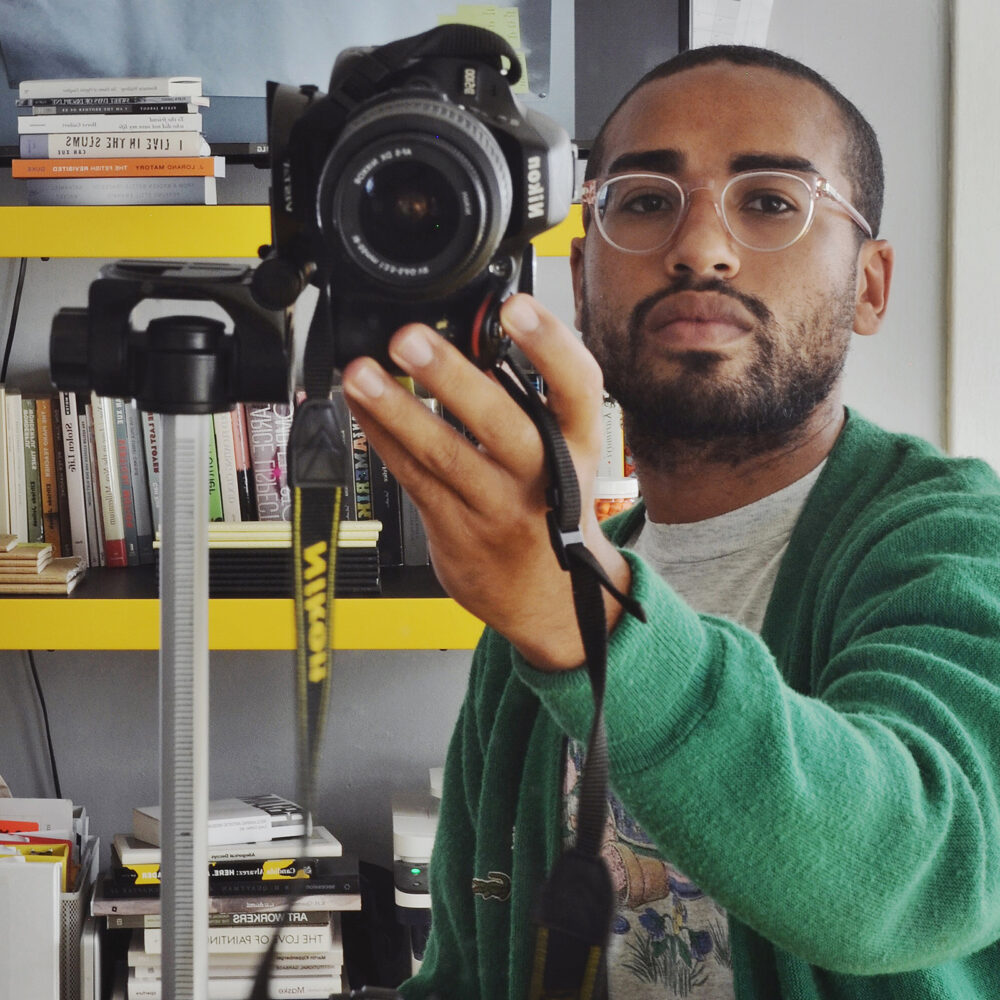← Explore
“The best way to fund your artistic practice is to organize it like a business, and to fully accept that responsibility. For that reason, most of our interventions take on an emotional tenor that quickly bleeds into economic or legal concerns.”
Evan Kleekamp is a writer and researcher living in Los Angeles. They are the research director of NOR Research Studio, a consulting service that specializes in artist career development. They are also Operations Director for Study Hall, a 5,000 member strong community and knowledge sharing resource for media workers.
Q: How do the artists you’ve worked with at NOR typically fund their artistic practices?
A: I tend to split our artist clients into two buckets: those who are pursuing grant funding or editorial support because their practices depend on institutional support, and those who are seeking funding outside the institutional sphere, typically via crowdfunding, because they distrust institutions. While our most consistent clients tend to have another source of money that supports their practice—usually an anchor gig—we do occasionally work with artists who have gallery representation and institutional resources.
Ultimately, we encourage people to professionalize, even if it’s just to understand the emotional discomfort that professionalizing entails. The best way to fund your artistic practice is to organize it like a business, and to fully accept that responsibility. For that reason, most of our interventions take on an emotional tenor that quickly bleeds into economic or legal concerns. Funding your artistic practice requires fluency with conventions such as contracts, and you can’t properly advocate for yourself within a contract if you don’t understand your material and personal value. Running a successful business also means recognizing that we sometimes need formal structures that will stimulate us into parenting ourselves.
Ultimately, we encourage people to professionalize, even if it’s just to understand the emotional discomfort that professionalizing entails. The best way to fund your artistic practice is to organize it like a business, and to fully accept that responsibility. For that reason, most of our interventions take on an emotional tenor that quickly bleeds into economic or legal concerns. Funding your artistic practice requires fluency with conventions such as contracts, and you can’t properly advocate for yourself within a contract if you don’t understand your material and personal value. Running a successful business also means recognizing that we sometimes need formal structures that will stimulate us into parenting ourselves.
Q: What new or emerging funding models do you think have the most potential to turn precarity into economic gain?
A: I have no faith in funding models. But I do have faith in psychological inquiry and accountability. Ultimately, the most recurring obstacle our clients face is themselves—no matter their definition of success. On a more intimate level, I know we’re doing a good job when we’ve identified a pattern in a client’s oeuvre or professional materials that, though it may make them uncomfortable, they can no longer ignore. You can’t turn precarity into economic gain until you conduct an inventory of the conditions that define your precarity. You need the evidence that proves your case, and you need to know, too, that you can’t advocate for yourself if you look upon your life solely through a fantastic lens. It’s a lifelong process that means coming to terms with your trauma, but it’s the only way to bring about lasting change. I’m quick to remind clients that social and economic mobility is an exploitative myth: it’s important to recognize that structural inequity is more than just an idea. The systems that force people into poverty are designed to be slow-changing and inert. They are not meant to empower creative and critically minded people.
“When one of our clients manages to sell their first work or discover that their work in another medium is financially viable after years of stress and confusion, that motivates us to keep going.”
Q: On NOR’s website, you write: “We know precarity firsthand, which allows us to illuminate paths toward funded, sustainable artmaking.” What are some success stories you’ve been most proud of?
A: To be completely honest, success in the art world is rare. I’m happy that we can consistently help clients get funding to attend a graduate program or that we can push their grant applications to the top of the pile. But I would be lying if I said there wasn’t a lot of luck and politics involved.
As the quote you’ve highlighted suggests, this comes from years of doing our work on ourselves and confronting painful moments in our personal history. If a client managed to get $25,000 in funds but they were too paralyzed by self-doubt to spend it on their practice, I wouldn’t be able to consider that a success. Similarly, when one of our clients manages to sell their first work or discover that their work in another medium is financially viable after years of stress and confusion, that motivates us to keep going. When we have clients who get to the finalist round of a grant application, that’s a strong argument that nothing was wrong with their work—they just needed more adequate framing and accomodation.
As the quote you’ve highlighted suggests, this comes from years of doing our work on ourselves and confronting painful moments in our personal history. If a client managed to get $25,000 in funds but they were too paralyzed by self-doubt to spend it on their practice, I wouldn’t be able to consider that a success. Similarly, when one of our clients manages to sell their first work or discover that their work in another medium is financially viable after years of stress and confusion, that motivates us to keep going. When we have clients who get to the finalist round of a grant application, that’s a strong argument that nothing was wrong with their work—they just needed more adequate framing and accomodation.
